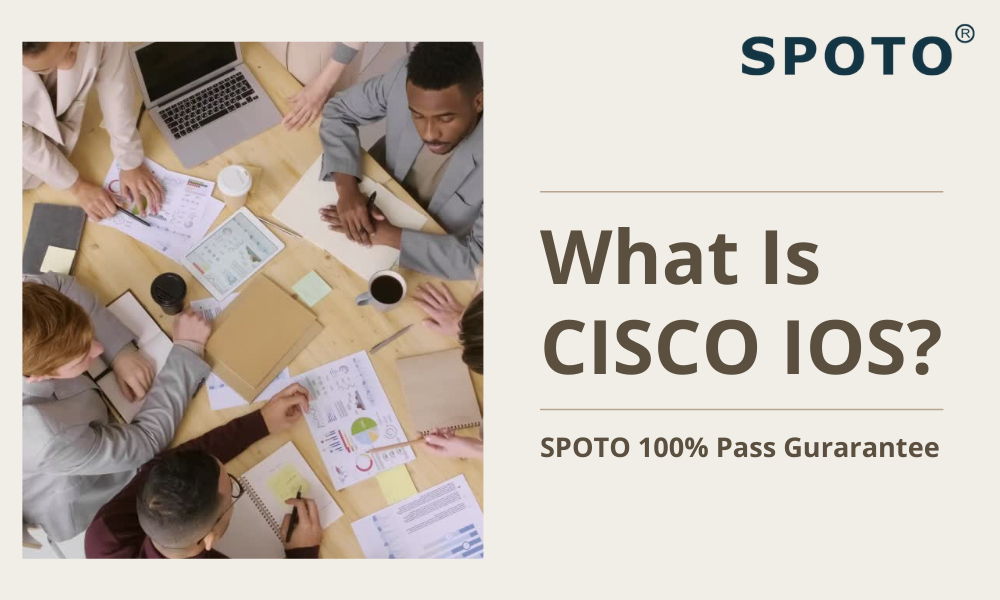Overview of Cisco IOS
Most Cisco routers and switches use IOS (Internetwork Operating System), a multitasking operating system. This operating system is used to configure the routing, switching, internetworking, and other functionalities that are provided by a Cisco device, among other things. IOS comes with a command-line interface that has a set number of multiple-word commands.
NOTE
CatOS, a legacy version of a CLI-based operating system, was used on previous versions of Cisco switches.
Using a 3745 router as an example, here’s how IOS looks when a Cisco device is booted up for the first time:
Cisco 3745 (R7000) processor (revision 2.0) with 249856K/12288K bytes of memory. Processor board ID FTX0945W0MY R7000 CPU at 350MHz, Implementation 39, Rev 2.1, 256KB L2, 512KB L3 Cache 5 FastEthernet interfaces DRAM configuration is 64 bits wide with parity enabled. 151K bytes of NVRAM. Press RETURN to get started!
Accessing the IOS
The IOS can be accessed in three different ways:
1. Console access – this form of access is typically needed to set up newly acquired devices. Because these devices usually don’t have an IP address assigned to them, they can’t be accessed across the network. A physical console port is available on the majority of Cisco devices. A rollover cable, a unique sort of cable with pins on one end reversed on the other end, can be used to connect this port to a computer. Because the rollover cable is a serial cable, it cannot be plugged into an Ethernet port on your computer. You’ll need an adapter to convert your computer’s interface (typically a 9-pin serial interface) to RJ-45.
NOTE
Because serial ports are uncommon on modern PCs, newer Cisco equipment typically has a USB console port.
2. Telnet access – this was once a popular method of gaining access to network devices. Telnet is a terminal emulator program that allows you to connect to an IOS device over the network and configure it remotely. An IP address and a Telnet server must be installed on the device that is being set up.
Telnet connects to the Internet through TCP port 23. One of the protocol’s main flaws is that it delivers all data in a clear-text format, including passwords! This is one of the reasons why this form of access is rarely utilized nowadays. In most cases, SSH is used instead.
3. SSH access – similar to Telnet, this sort of access allows you to configure equipment remotely. Still, it adds an extra layer of security by encrypting all interactions with public-key encryption. SSH makes use of the well-known TCP port 22.
IOS Modes
IOS includes a variety of modes. There are three primary modes and numerous sub-modes to choose from. We’ll go over the three primary modes as well as one sub-modes.
User EXEC Mode: The default mode for the IOS CLI is user EXEC mode. After accessing the IOS, a user is placed in this mode, where only basic commands (such as ping or Telnet) are available.
Privileged EXEC Mode: access this mode by typing the enable command in user EXEC mode. This mode can be secured with a password. A user can inspect and alter the configuration of a device in this mode.
Global Configuration Mode: From the privileged EXEC mode, type the configure terminal command to access the global configuration mode. It’s used to make changes to the device’s settings.
Many sub-modes can be found in a global configuration mode. When a user wants to configure an interface, he must first enter the global configuration mode and then enter the interface INTERFACE TYPE INTERFACE NUMBER command (e.g., interface FastEthernet 0/1 ). Many commands related to the interface can be found in this sub-mode.
Last Thoughts
SPOTO provides 100% authentic CCNA and CCNP test dumps for the written exam, complete with real questions and answers so that you can practice the real exam questions in a simulated exam environment! Our CCIE lab training course and Learning Path take you through every topic covered in the exams, ensuring that you pass the exams and succeed in your career.


Comments